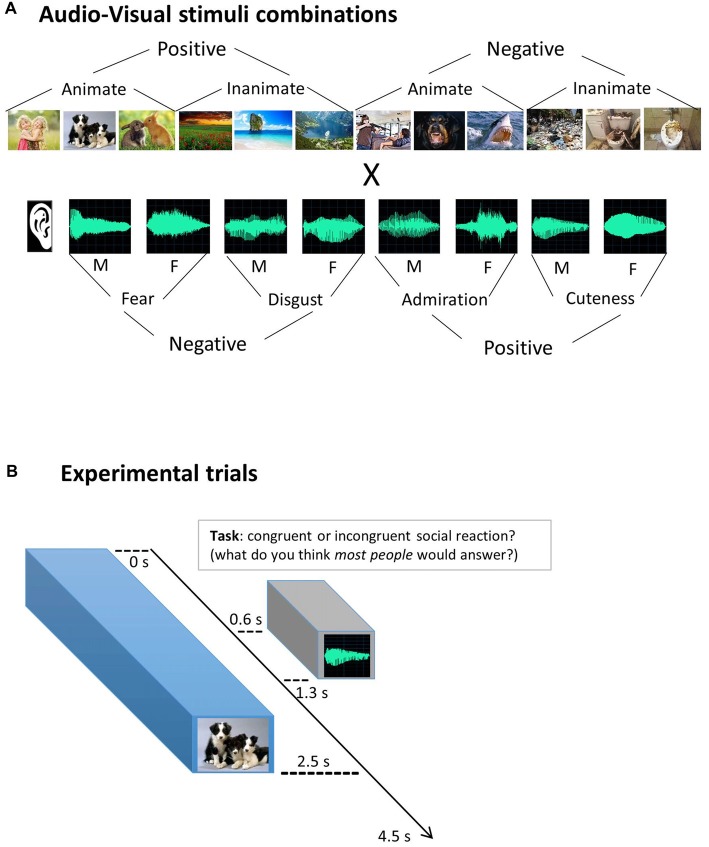Figure 1.
Experimental design. (A) Audio-Visual stimuli combinations. Visual images were combined with auditory stimuli (vocal utterances), simulating social reactions for different scenarios. In every run, all 12 images were combined with all eight vocal utterances, enabling an orthogonal analysis of each dimension: visual, auditory and social congruency. F = female voice; M = male voice. (B) Experimental trials. Participants were asked to judge the appropriateness of the social reactions, responding “congruent” or “incongruent” with assigned buttons. They were explicitly instructed not to use their own personal opinion (self-reference) but to infer what most of people would think about the social appropriateness (“social norm” mentalizing) and to respond accordingly. To mimic a natural timing of social reactions, vocal utterances started 0.6 safter the visual scene. Respecting the International Affective Picture System (IAPS) policy, the images presented here are not the original ones.

